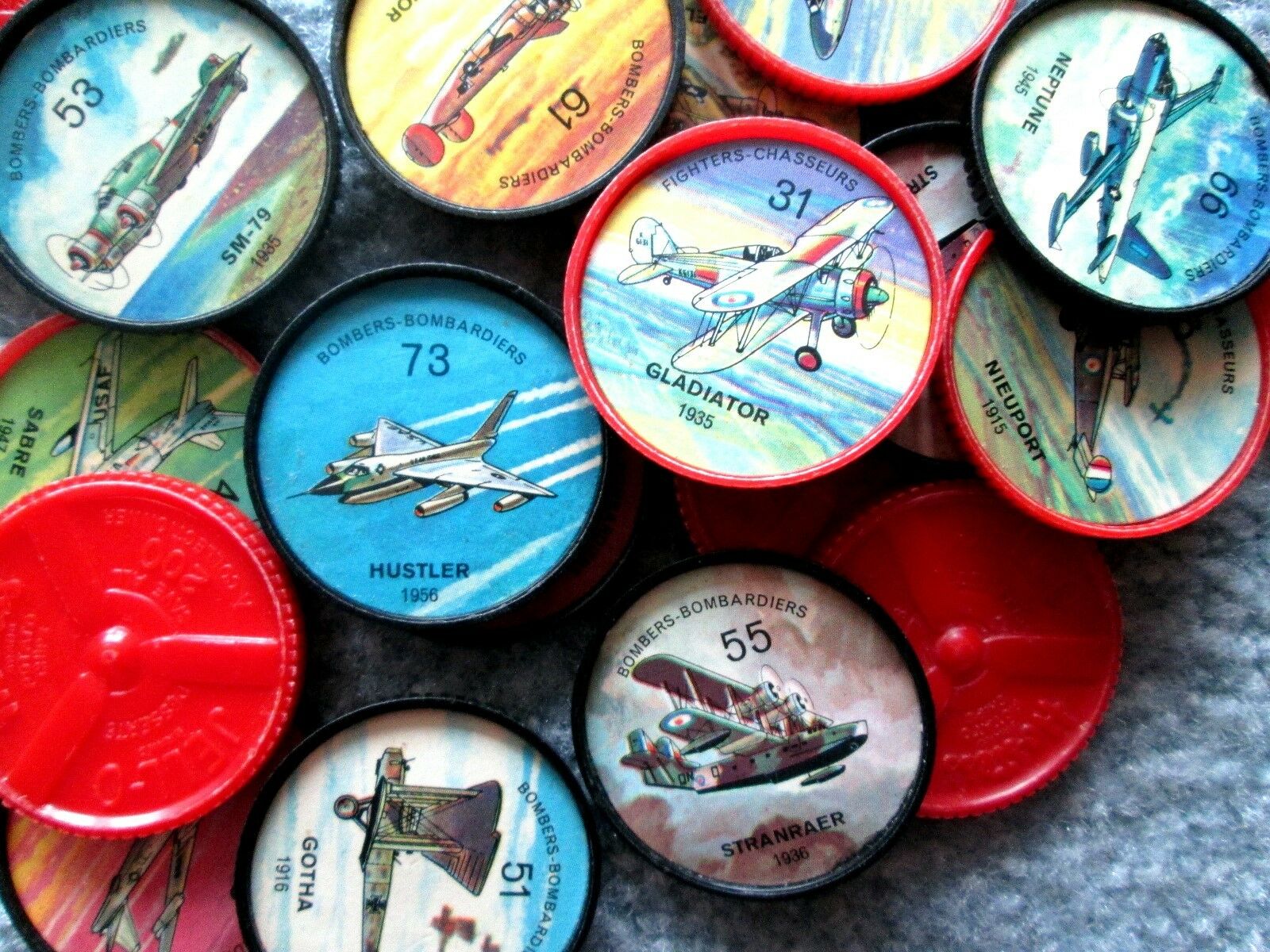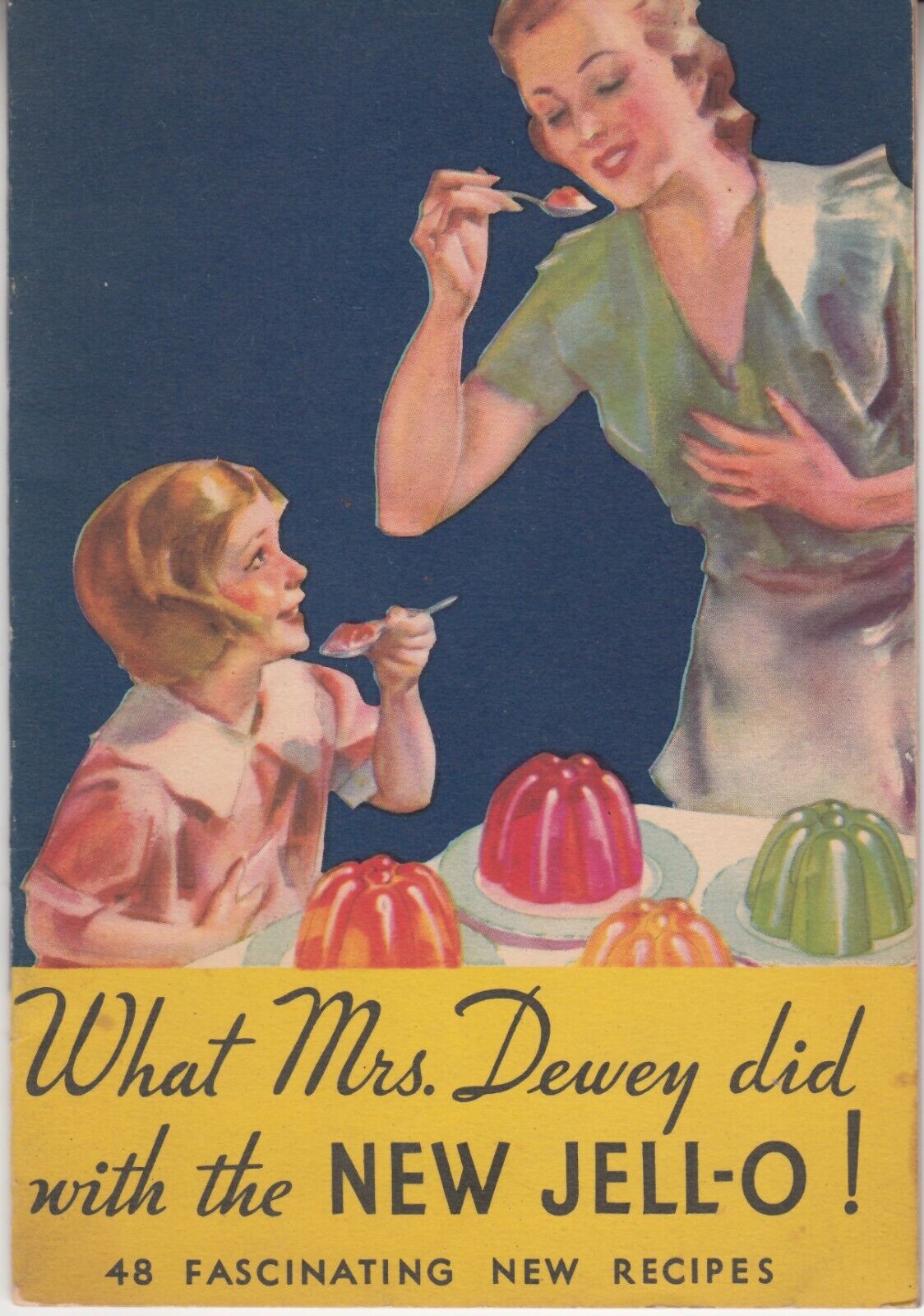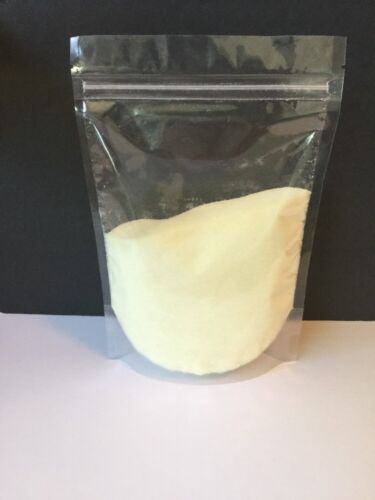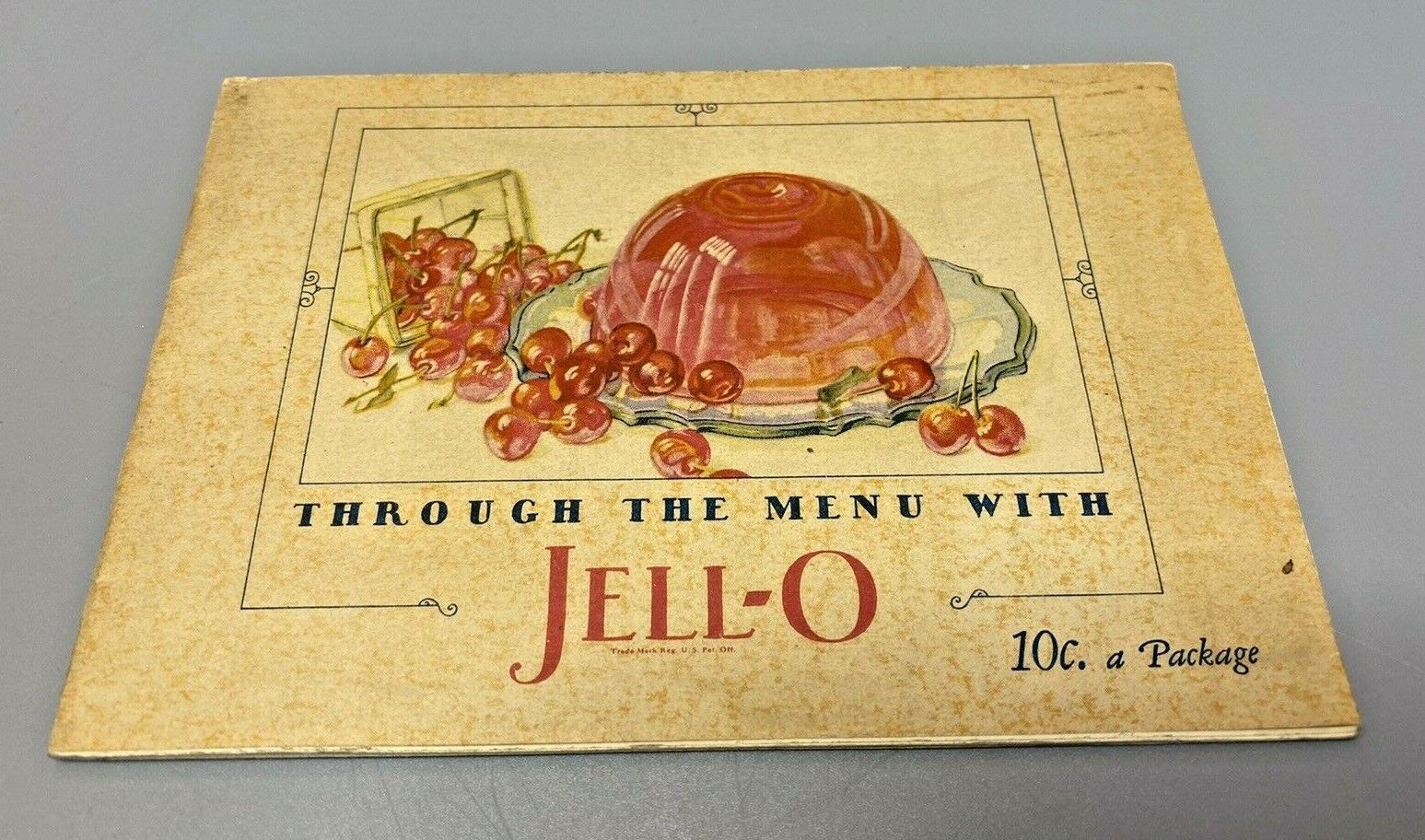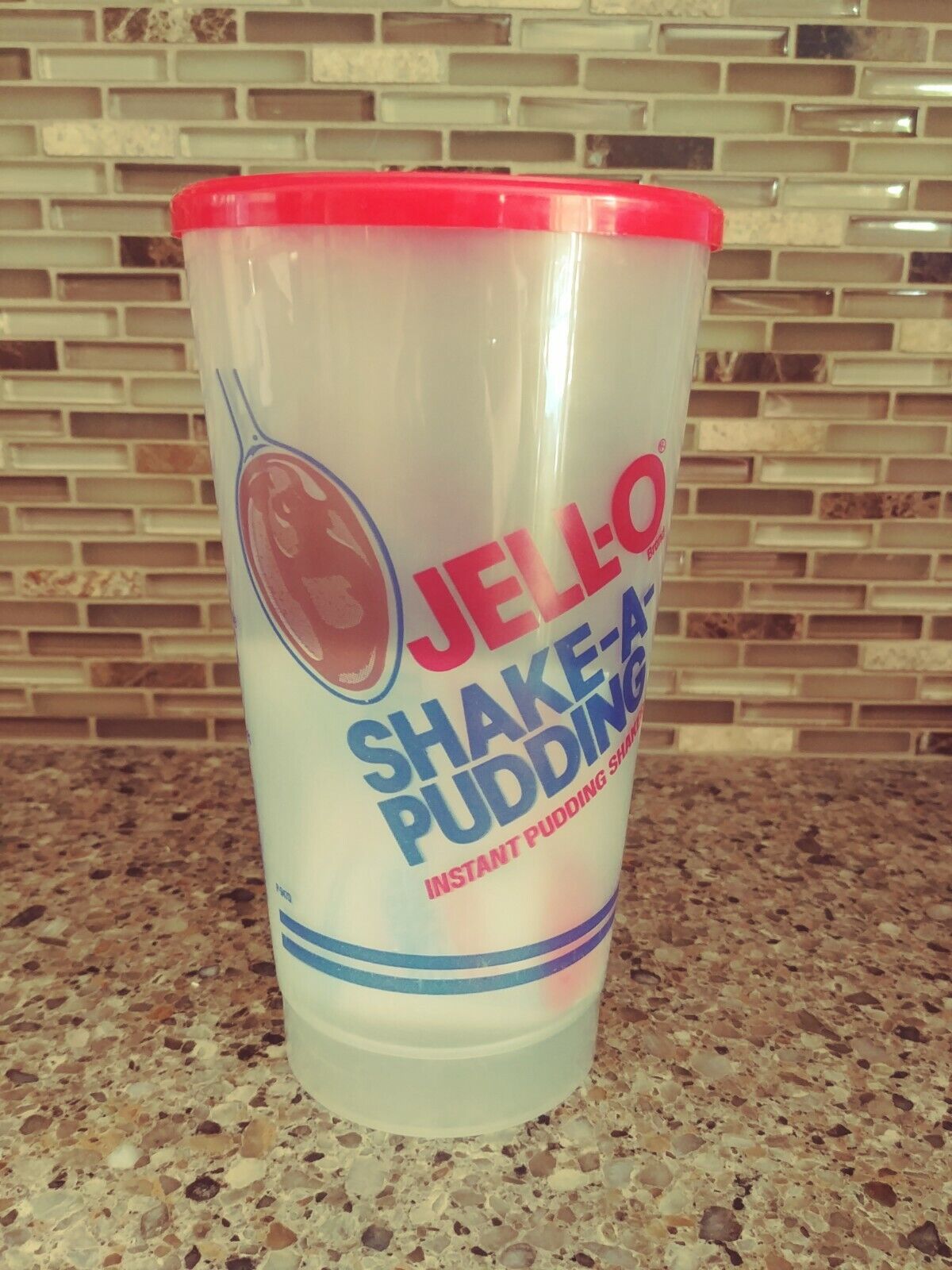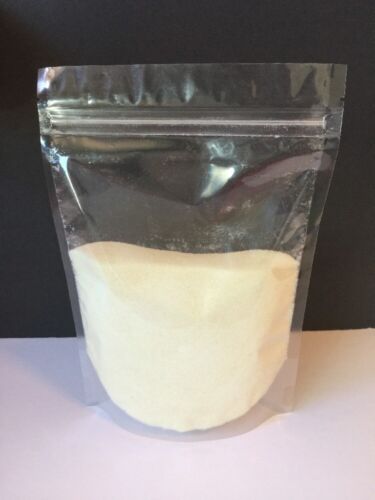-40%
6 Vintage Antique Gelatine Jell-O Knox Recipe Cookbook Booklets 1920's - 1930's
$ 13.72
- Description
- Size Guide
Description
6 Vintage Antique Gelatine & Jell-OCookbook & Recipe Pamphlets, 1920's - 1930's
Jell-O "For More Than a Quarter of a Century" (1925)
18 Pages with 4 Page Insert
Jell-O "Brings Dozens of Answers" (1928)
22 Pages
Try the New Jell-O: 48 New Recipes (1932)
23 Pages
What Mrs. Dewey did wit the New Jell-O (1933)
23 Pages
Knox Gelatine: Dainty Desserts, Candies, Salads (1931)
47 Pages
Plymouth Rock Gelatine: Dainties and Household Helps (n.d.)
10 Pages
Very Good+ Excellent Condition. The booklets are clean, covers attached, secure stapled bindings and wrappers, unmarked, no writing, no highlighting, colorful inner pages and advertising, minimal to no fading, no stains, no ripped pages, no page folds. Some light surface and edge wear from age, use, storage and handling.
Free USA Shipping
>>>>
Jell-O is a variety of gelatin desserts (fruit-flavored gels), puddings, and no-bake cream pies. The original Jell-O gelatin dessert (genericized as jello) is the signature of the brand. Jell-O is a registered trademark of Kraft Heinz and is based in Chicago, Illinois. The original gelatin dessert began in Le Roy, New York, in 1897 after Pearle Bixby Wait and his wife May trademarked the name for a product made from strawberry, raspberry, orange, or lemon or lime flavoring added to sugar and granulated gelatin, which had been patented in 1845. The dessert was especially popular in the first half of the 20th century.
Gelatin, a protein produced from collagen extracted from boiled bones, connective tissues, and other animal products, has been a component of food, particularly desserts, since the 15th century. Gelatin was popularized in New York in the Victorian era with spectacular and complex jelly molds. Gelatin was sold in sheets and had to be purified, which was time-consuming. Gelatin desserts were the province of royalty and the relatively well-to-do. In 1845, a patent for powdered gelatin was obtained by industrialist Peter Cooper, who built the first American steam-powered locomotive, the Tom Thumb. This powdered gelatin was easy to manufacture and easier to use in cooking. In 1897, in LeRoy, New York, carpenter and cough syrup manufacturer Pearle Bixby Wait trademarked a gelatin dessert called "Jell-O". Wait and his wife, May, added strawberry, raspberry, orange, and lemon flavoring to granulated gelatin and sugar. In 1899, Wait sold Jell-O to "Orator Francis Woodward", whose Genesee Pure Food Company produced the successful Grain-O health drink. Part of the legal agreement between Woodward and Wait dealt with the similar Jell-O name.
Various elements were key to Jell-O becoming a mainstream product: new technologies, such as refrigeration, powdered gelatin and machine packaging, home economics classes, and the company's marketing. Initially, Woodward struggled to sell the powdered product. Beginning in 1902, to raise awareness, Woodward's Genesee Pure Food Company placed advertisements in the Ladies' Home Journal proclaiming Jell-O to be "America's Most Famous Dessert." Jell-O was a minor success until 1904, when Genesee Pure Food Company sent armies of salesmen into the field to distribute free Jell-O cookbooks, a pioneering marketing tactic. Within a decade, Genesee Pure Food Company added three new flavors, chocolate (discontinued in 1927), cherry, and peach, and it launched the brand in Canada. Celebrity testimonials and recipes appeared in advertisements featuring actress Ethel Barrymore and opera singer Ernestine Schumann-Heink. Some Jell-O illustrated advertisements were painted by Maxfield Parrish. In 1923, the newly rechristened Jell-O Company launched "D-Zerta", an artificially sweetened version of Jell-O. Two years later, Postum and Genesee merged, and in 1927 Postum acquired Clarence Birdseye's frozen foods company to form the General Foods Corporation.
By 1930, there appeared a vogue in American cuisine for congealed salads, and the company introduced lime-flavored Jell-O, to complement the add-ins that cooks across the country were combining in these aspics and salads. Popular Jell-O recipes often included ingredients like cabbage, celery, green peppers, and even cooked pasta. In 1934, sponsorship from Jell-O made comedian Jack Benny the dessert's spokesperson. At this time Post introduced a jingle ("featured" by the agency Young & Rubicam) that was familiar over several decades, in which the spelling "J-E-L-L-O" was (or could be) sung over a rising five-note musical theme. The jingle was written by Don Bestor, who, at the time, was the bandleader on Jack Benny's radio show, "The Jell-O Program Starring Jack Benny." In 1936, chocolate returned to the Jell-O lineup, as an instant pudding made with milk. It proved enormously popular, and over time other pudding flavors were added such as vanilla, tapioca, coconut, pistachio, butterscotch, egg custard, flan, and rice pudding. By the 1950s, salads became so popular that Jell-O responded with savory and vegetable flavors such as celery, Italian, mixed vegetable, and seasoned tomato. These flavors have since been discontinued.
Though much of the elaborate and dainty tea time fare served between the 1920s and 1950s was luxurious and decorative, using fancy ingredients like caviar or lobster, Jell-O became an affordable ornamental ingredient that women were able to use to create feminine, light, delicate dishes that were the standard of refined tea time fare during that period. By the Jazz Age nearly 1/3 of salad recipes in an average cookbook were gelatin-based recipes including varied fillings of fruit, vegetables or even cream cheese. Typical recipes from the early 20th century included exotic fruits like figs, dates and bananas, or lemon flavored jello paired with maraschino cherries and other ingredients like marshmallows and almonds. One sweet gelatin-based fruit dessert called only "Good Salad" includes vanilla pudding, tapioca pudding, pineapple, mandarin oranges and orange gelatin. The pudding mixes are made with the reserved juice from the canned fruit and the flavored gelatin, the fruits are added and the dessert salad is allowed to set in the fridge and served cool. One savory recipe collected by the Des Moines Register, published in Iowa, is for a tomato soup gelatin salad. The salad, served chilled, is made from lemon gelatin, tomato soup, cream cheese, stuffed olives combined with various other ingredients and seasonings.
The baby boom saw a significant increase in sales for Jell-O. Young mothers didn't have the supporting community structures of earlier generations, so marketers were quick to promote easy-to-prepare prepackaged foods. By this time, creating a Jell-O dessert required simply boiling water, combining the water with Jell-O, and putting the mixture into Tupperware molds and refrigerating it for a short time. New flavors were continually added and unsuccessful flavors were removed: in the 1950s and 1960s, apple, black cherry, black raspberry, grape, lemon-lime, mixed fruit, orange-banana, pineapple-grapefruit, blackberry, strawberry-banana, tropical fruit, and more intense "wild" versions of the venerable strawberry, raspberry, and cherry. In 1966, the Jell-O "No-Bake" dessert line was launched, which allowed a cheesecake to be made in 15 minutes. In 1969, Jell-O 1∗2∗3 (later Jell-O 1•2•3), a gelatin dessert that separated into three layers as it cooled, was unveiled. Until 1987, Jell-O 1•2•3 was readily found in grocery stores throughout most of the United States, but the dessert is now rare. In 1971 packaged prepared pudding called Jell-O Pudding Treats were introduced. Jell-O Whip 'n Chill, a mousse-style dessert, was introduced and widely promoted; it remains available in limited areas today. A similar dessert called Jell-O Soft Swirl was introduced in 1972, flavors included Chocolate Creme, Strawberry Creme, Vanilla Creme, and Peach Creme. Florence Henderson appeared in TV ads for this product. In 1964, the slogan "There's always room for Jell-O" was introduced, promoting the product as a "light dessert" that could easily be consumed even after a heavy meal.
Throughout the 1960s through the 1980s, Jell-O's sales steadily decreased. Many Jell-O dishes, such as desserts and Jell-O salads, became special occasion foods rather than everyday items. Marketers blamed this decline on decreasing family sizes, a "fast-paced" lifestyle and women's increasing employment. By 1986, a market study concluded that mothers with young children rarely purchased Jell-O.
>>>>
Gelatin or gelatine (from Latin: gelatus meaning "stiff" or "frozen") is a translucent, colorless, flavorless food ingredient, commonly derived from collagen taken from animal body parts. It is brittle when dry and rubbery when moist. It may also be referred to as hydrolyzed collagen, collagen hydrolysate, gelatine hydrolysate, hydrolyzed gelatine, and collagen peptides after it has undergone hydrolysis. It is commonly used as a gelling agent in food, beverages, medications, drug or vitamin capsules, photographic films, papers, and cosmetics. Substances containing gelatin or functioning in a similar way are called gelatinous substances. Gelatin is an irreversibly hydrolyzed form of collagen, wherein the hydrolysis reduces protein fibrils into smaller peptides; depending on the physical and chemical methods of denaturation, the molecular weight of the peptides falls within a broad range. Gelatin is in gelatin desserts, most gummy candy and marshmallows, ice creams, dips, and yogurts. Gelatin for cooking comes as powder, granules, and sheets. Instant types can be added to the food as they are; others must soak in water beforehand.














